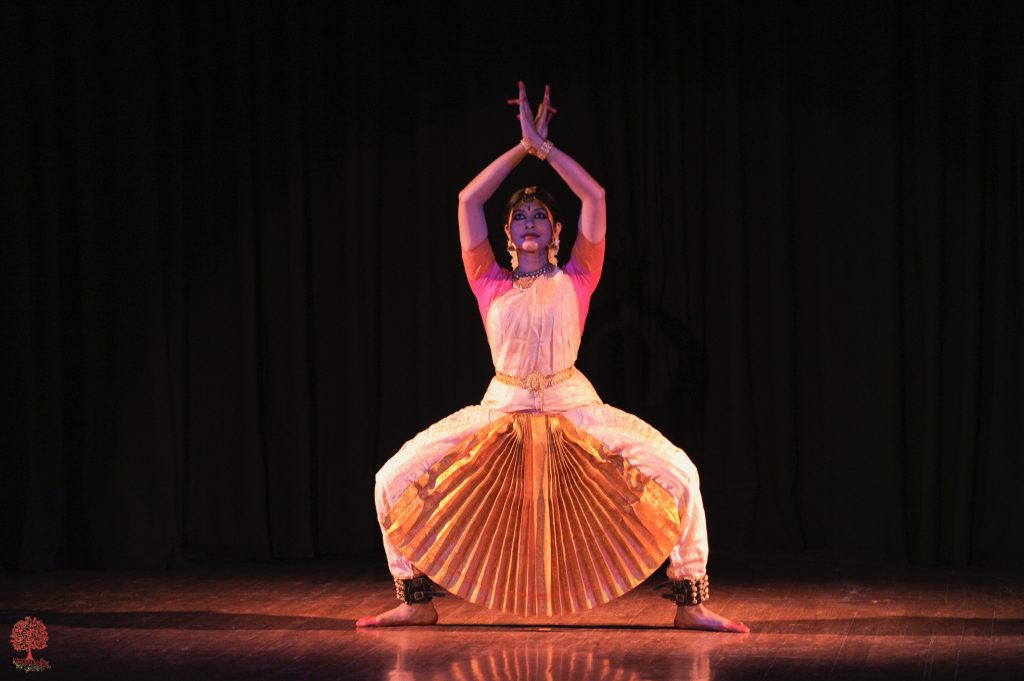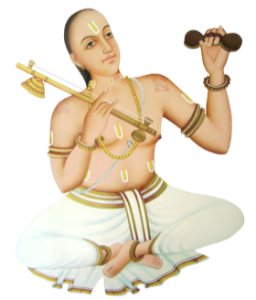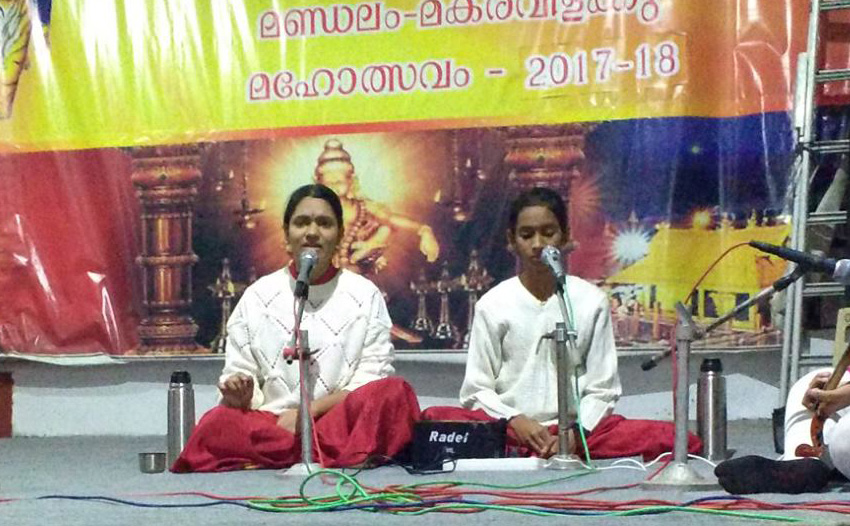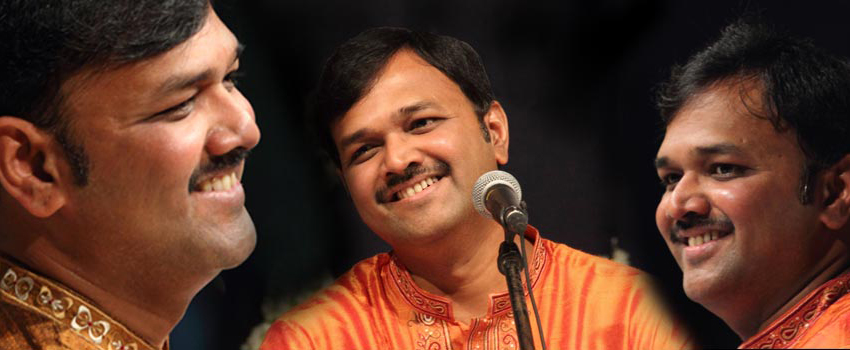Vittala Venkata Kshetram was the concluding presentation of Divya Kshetram – exploring the deity and his/her kshetram or dwelling.
In an attempt to explore the virtuosity of two forms or avatars of ‘a’ deity in two parts of India, Vittala Venkata Kshetram is being explored. The juxtaposing of the deity in two different geographic regions that will visually present the portraiture, encapsulating the physical and spiritual facets.
Interesting aspects that were explored included the Kshetra Mahima or the description of the geographic area of the temple including the glory and tales that speak of the greatness of the area, the temple and its architectural significance visually bringing out the the physical attributes or architecture of the temple, the attributes of the two corresponding deities Vittala in Pandharpur and Venkateshwara in Tirupati, the spiritual / religious methods of worship and prayer – we have numerous compositions like bhajans, krithis, ashtakams, abhangs etc that are chanted or sung as a part of the obeisance paid to the deities. Selected verses from these traditional works were included to bring out the intrinsic aspects of the deity concerned. The main stay of the presentations were based on a story that connects the deity to the kshetram.

TIRUPATI KSHETRAM

Tirumala (Upper Tirupati) This town was an established centre of Vaishnavism around the 5th century A.D. during which it was praised by Alvars. The temple rites were formalised by the Vaishnavite saint Ramanujacharya in the 11th century AD. Tirupati survived the Muslim and British invasions. During the early 1300s Muslim invasion of South India, the deity of Sri Ranganathaswamy Temple, Srirangam was brought to Tirupati for safekeeping. The temple town for most of the medieval era part of Vijayanagara Empire till 17th century and its rulers contributed considerable resources and wealth notable by Krishna Deva Raya and Achyuta Deva Raya, Sadasiva Raya and Tirumala Deva Raya.
Why is Tirupati Venkata or Balaji as he is also known the richest God in the world collecting over 22.5 million INR daily at the temple? Why do millions of people donate their hair to him? Why is the Tirupati laddoo the tastiest prasadam in the world?
The production explored the stories, rituals and secrets of the grand Tirupati temple through the compositions of the 15th century saint poet Thalapakka Annamayya who was the official song writer of the Tirupati temple with over 32000 compositions to his credit, inscribed on copper plates.

His unique style of songs written in praise of the deity endeared him to the people as Sankeerthana Acharya.
He was widely regarded also as Andhra Pada kavitā Pitāmaha (Godfather of Telugu song writing). Presently about 12,000 of the 32,000 songs written by him are available. Annamachyara’s poems fall under three categories: Bhakti, Vedantic and Viragya.
The Bhakti poems of Annamacharya are of two major kinds: firstly, those that are written in praise of the glory of the Lord of the Seven Hills and secondly, his devotional outpourings in which the poet saint sings in praise of Lord Rama, but nevertheless treats him the same as his Lord of the Seven Hills.
This reflects the principle of looking at the one divine in many of its manifestations. Another key element is that his songs reflect the ‘Sringara’ or songs of love; in which Annamacharya expresses the urge of the individual self to erode the line that remains a hurdle to be with the universal self which lies as an underlying unity of all its diverse manifestations on the earth through the medium of love or in communion with the divine.
Annamacharya refers to the lord as vaddi kasula vade.….the one who takes compound interest.
THE LORD OF THE SEVEN HILLS sees a group of pilgrims on their Teerth Yatra to Tirupati. “There it is, the Lord’s abode, on top of the seven hills which symbolise the seven heads of the Serpant Adi Sesha who shades the Lord’s head when he sleeps. Look at this beautiful temple with its golden pillars, long passage ways, its towering flag post and its majestic gopuram. And did you know, it was all built by King Tondaman Chakravarty in whose dream Lord Venkateshwara himself appeared and asked him to build this temple for him”, say the devotees. On entering the temple, one must first bathe in the holy pond Pushkarini around which the temple was built. Then the customary visit to the shrine of Adi Varaha Swamy before paying respects to Lord Balaji himself.
The head tonsuring ceremony
As per legend, when Lord Venkateswara was hit on his head by a shepherd, a small portion of his scalp became bald. This was noticed by Neela Devi, a Gandharva princess. She felt “such an attractive face should not have a flaw”. Immediately, she cut a portion of her hair and, with her magical power, implanted it on his scalp. Lord Venkateswara noticed her sacrifice. As hair is a beautiful asset of the female form, he promised her that all his devotees who come to his abode would offer their hair to him, and she would be the recipient of all the hair received. Hence, it is believed that hair offered by the devotees is accepted by Neela Devi. The hill, Neeladri, one of the seven hills, is named after her.
The story of the Hundi
 Why are more than 22.5 million INR collected daily in the Hundi of the temple? Lord Venkateshwara’s marriage to goddess Alamelumanga was an expensive affair, and he had to borrow money from the Lord of wealth- Kubera. Srinivasa sought a loan of one crore and 11.4 million (11,400,000) coins of gold, It is our duty to help our Lord Venkateshwara return the debt with interest to Kubera, so thousands of devotees donate generously into the Hundi everyday.
Why are more than 22.5 million INR collected daily in the Hundi of the temple? Lord Venkateshwara’s marriage to goddess Alamelumanga was an expensive affair, and he had to borrow money from the Lord of wealth- Kubera. Srinivasa sought a loan of one crore and 11.4 million (11,400,000) coins of gold, It is our duty to help our Lord Venkateshwara return the debt with interest to Kubera, so thousands of devotees donate generously into the Hundi everyday.
The Lord and his Consort
THE SANCTUM DOOR or Garbhagruha dwaram (Sanctum Sanctorum) is called Ananda Nilayam sees the Saint Annamacharya himself performing the customary rituals towards the Lord. The Lord’s right hand, instead of blessing devotees in the Abhaya hasta, has his 4 fingers pointing downwards towards his feet- his 4 fingers denote Dharma, Artha, Kama, Moksha. He says these 4 can be achieved or controlled if you are at my feet, and all your troubles shall wither away, as denoted by the position of his left hand. In a private dialogue with the Lord, Annamacharya says, “Hide all my poems and songs at your feet O Lord, they are not for anyone else’s eyes or ears. No one else will understand my intense emotion for you, so don’t show them to anyone. Each song that I have written is like a flower that I offer to your lotus feet.” Interestingly enough, Lord Venkateshwara hid Annamacharya’s compositions in the coffers of the temple for over 400 years until he decided in the 1930s that is was time for the Saint poet to get some credit for the beautiful poems he had written.
Annamacharya in one of his shringara based krithis describes the lord and his consort Alamelumanga are finally alone in their chambers, he brings their passionate love that they share to life. She says “What can I say about my Lord? There are no words to express how wonderful he is!” says Alamelumanga. “My body knows the love he has bestowed on me. I want to have his tender hands clasped around my wrists instead of wearing bangles, I want to wear a string of his kisses around my neck instead of necklaces, and my waist would much rather have his arms wrapped around it than bejewelled belts. He is my life, my Lord”, she says.“His unwavering gaze upon me, his words which strike at my core, his hearty laughter- all spread a web of passionate love that we are both engaged in. There is nothing left to say now, what can I say about my Lord?”
After a beautiful night of love making, the Lord and his consort must return at dawn to their statue state in the sanctum, as duty calls for them to bless the millions who come to pay their respects. It was the poet’s vivid imagination that brought colour to the entire presentation.
The Lord of the seven hills or Tirupati Venkata was presented by Dakshina Vaidyanathan Baghel.










